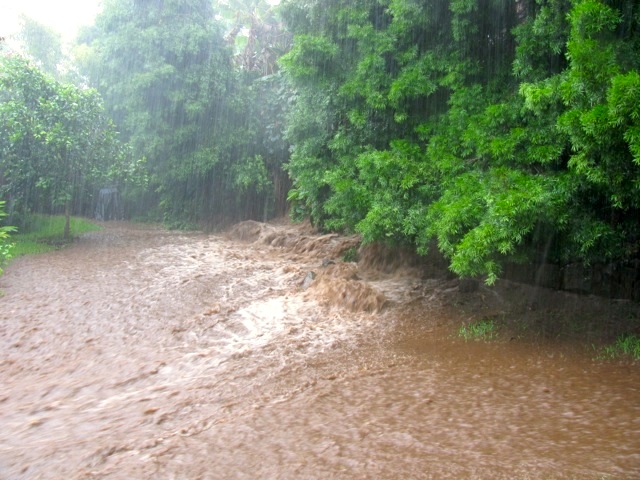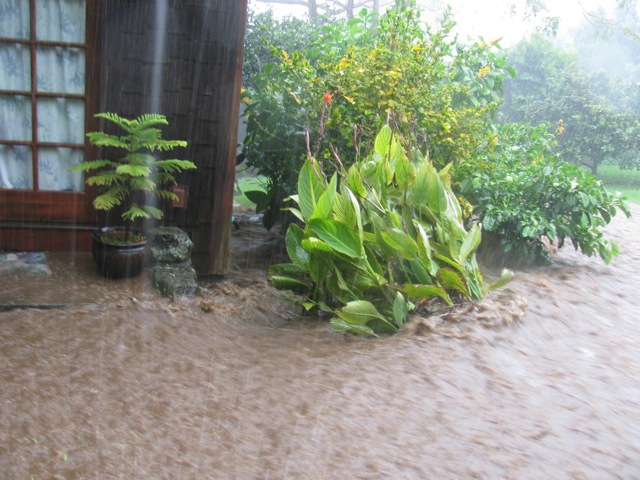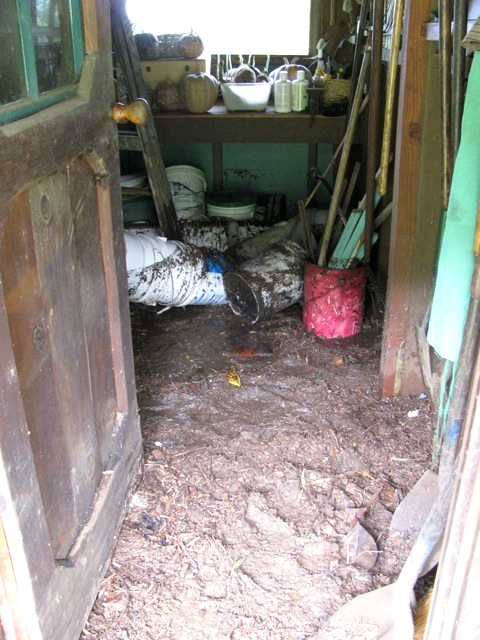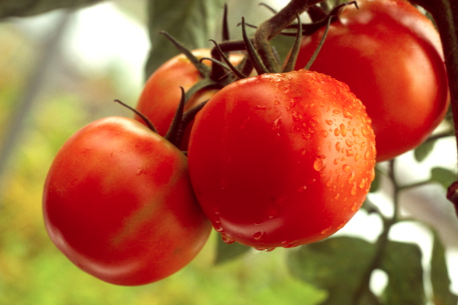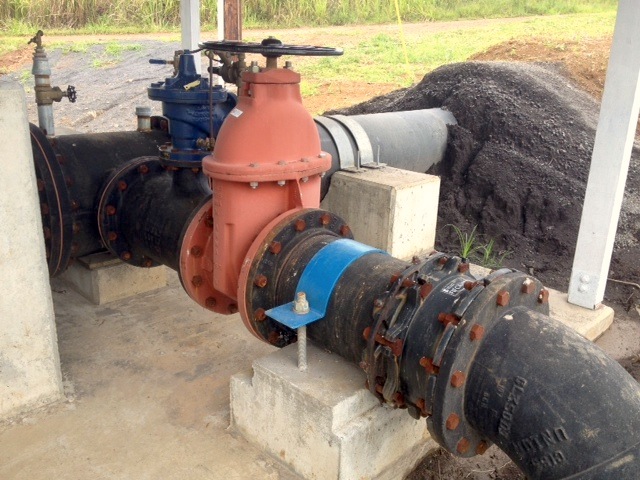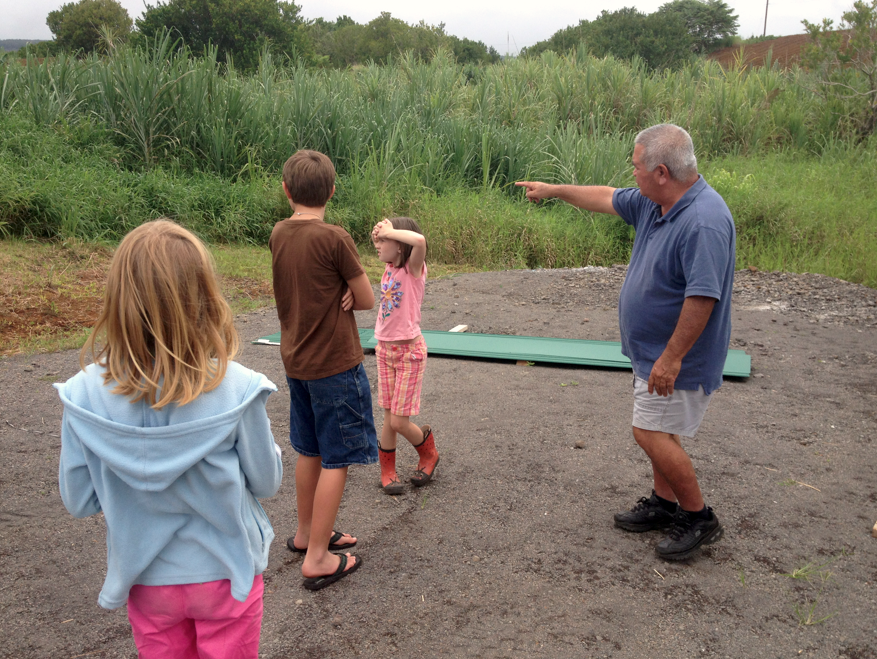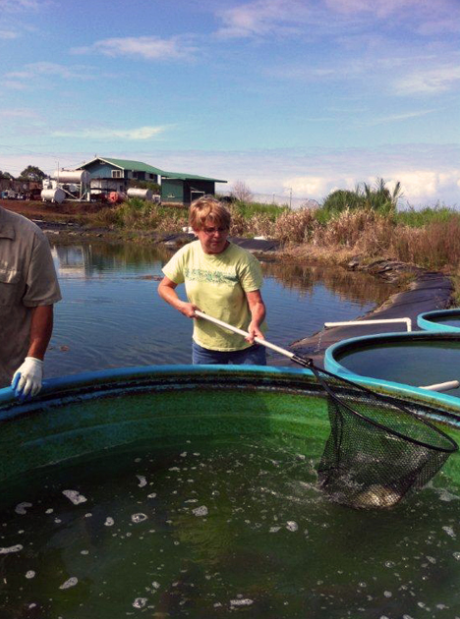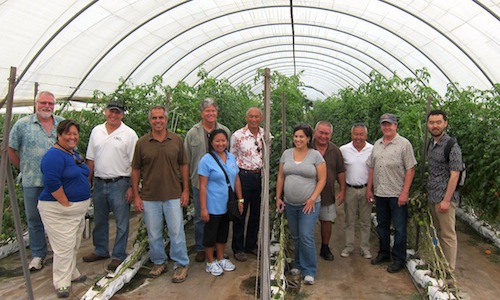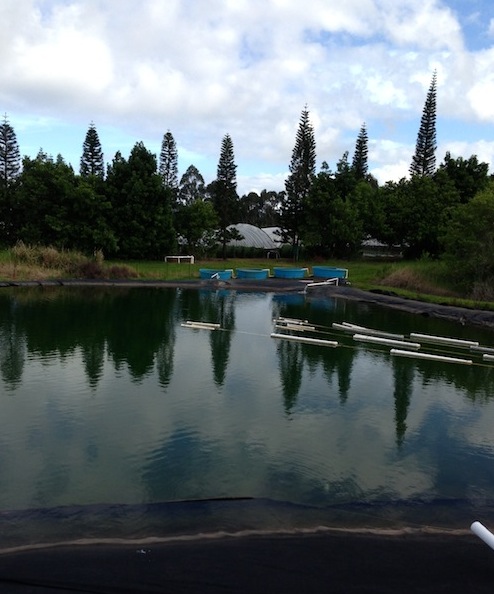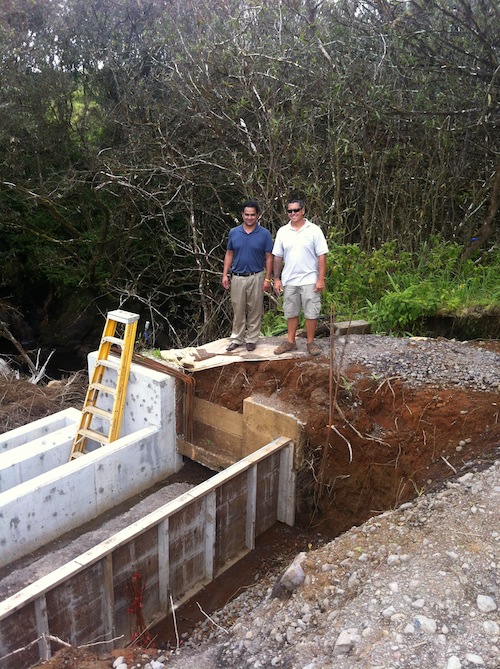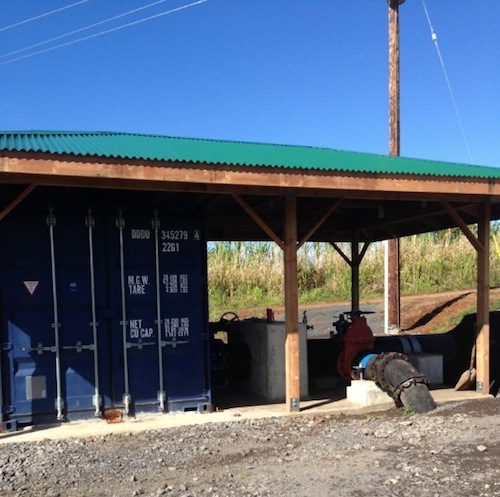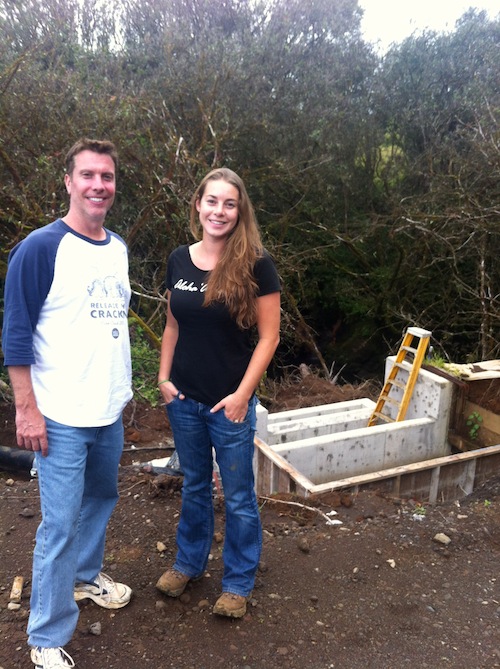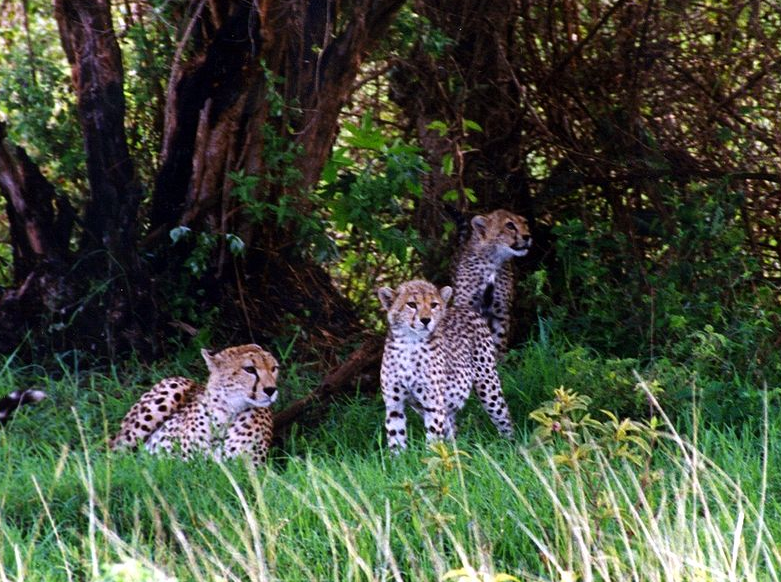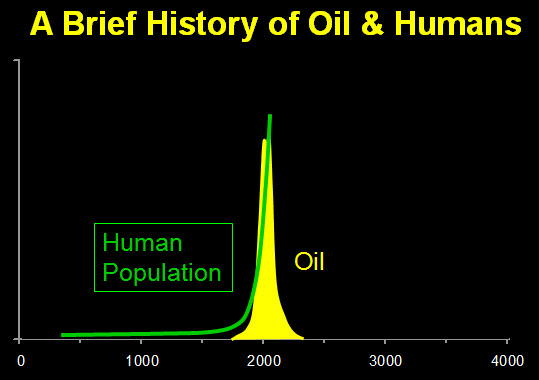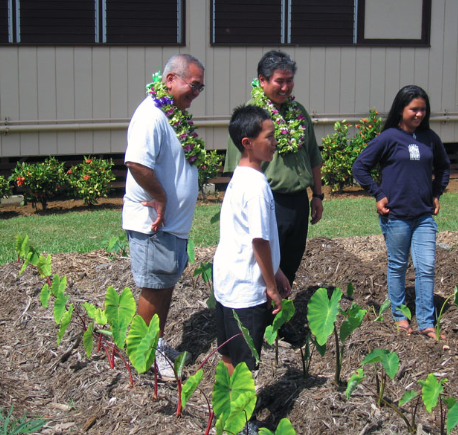Richard Ha writes:
Nancy Redfeather is an organic farmer and good friend of mine. She heads the School Garden Network and is a perfect example of someone who walks the talk.
We know ancient Hawaiians grew their food primarily around the valley/plains where nutrients were funneled down from the uplands. Some examples are Waipi‘o Valley, lots of places on Kaua‘i and Waikiki. Then they did field systems like upslope ones in Kona and Kohala.
As a farmer myself, I know this took a lot of planning and effort. Upslope farming is not easy at all.
I think the ancient Hawaiians would understand and greatly admire what Nancy folks have done!
By Nancy Redfeather
I have been a home gardener for 40 years, and my husband Gerry, too. We love growing food, herbs, flowers and medicines, and working with the soil. It has always been an interest and passion of mine, and my husband feels the same way. I think that is one of the reason we fell in love.
It’s hard to explain why we feel that way we do. We love the land and enjoy forming a partnership with it. When I started growing gardens, as a young teacher in 1973, I really didn’t know what I was doing, so I read books, took classes and learned from the excellent gardeners around me. I continue to do all those things 40 years later!
We live at Kawanui Farm in the ahupua‘a of Kawanui, nestled between Honalo and Kainaliu in mauka Kona. My neighbors’ families have all lived here for as long as anyone can remember
Kawanui, according to the Hawaiian Dictionary, means “the great jumping off place.” And so it has been that for Gerry and me. The 1.2 acres of land have afforded us the experience of a lifetime – to work with a raw piece of land, create a relationship with it and build soil fertility by recycling nutrients into the soil
When we arrived, most of the piece was in Guinea Grass. We carefully removed the clumps with a small tractor and built an enormous compost pile, returning the finished compost back to the land. So began the great horticultural adventure at Kawanui Farm.
Now it is 15 years later. The quarter-acre kitchen garden, half-acre production garden and half acre of orchard and coffee continues to grow and change with the seasons and the year.
All organic matter is recycled back into the land, the wood becomes firewood for our morning fires and the ash is cycled back into the garden beds. Everything else is composted or used as mulch. We always try to keep the ground covered, as uncovered soil will want to germinate something to cover it, moisture is lost and organic matter is burned up. Besides applying compost, bones are burned and crushed, basalt rock dust is spread, seaweed is composted, but above everything is the compost. Gerry calls it, “The heart and soul of the garden.”
I’m fortunate that now I can work with schools, children, youth and teachers all around Hawai‘i Island and reintroduce children to the garden, as over the past 30 years fewer and fewer people have been growing food for their families. In the 1970s and earlier in Hawai‘i, it was common to have a backyard garden to help feed the family, along with hunting, fishing and trading the foods and fruits of the land with your friends and neighbors. Most schools had large gardens and the food grown was incorporated into the lunch meal for the children. Today that is illegal.
Renewing our connection with the garden, our food and the land will help to also reconnect us to the values of Aloha ‘Aina, Malama ‘Aina and ‘Aina Momona: Love for the land, caring for the land, and the abundance that comes from the land.
On May 4, 2011, after an entire year of rain in the mauka area, there was a “weather event” of biblical proportions. A cold system from the north collided with a warm system from the south right over the area between Honalo to Kealakekua.
Lightning bolts were hitting the ground and setting electrical poles on fire. The thunder was deafening. The rain was torrential, and as I sat, working at my desk and looking out the window, I began to see streams of water shooting through the stone wall pukas behind our house. And then the water broke down the wall and came toward the house in a river. For four hours it continued to flow, about a foot deep or so, over the entire land.
It never entered my home, but carried 12 years of compost from the gardens down the hill. The water broke down the wall at the bottom of the land and went straight for the ocean, carrying a great deal of fertility with it. There was nothing to do but watch and pray.
We had eight inches of rain that day, and later NRCS told me they estimate that 340 million gallons of water came down the hill that
afternoon. I have no doubt this was a global warming event. More rain and more drought. As you can imagine the place was a mess. Floods bring more than water. Glass, plastic, weed seeds and diseases we had never seen in our plants before.
For one year following, we rebuilt walls, hauled soil back up to the gardens and continued composting and giving special teas to heal the land. One year later, everything was back to where it was. The land had recovered and we had also. I think the underlying humus, organic matter, and years of composting and mulching helped the land to heal itself. Now, two years later, there is not a trace of disease. Flood? What flood?
We feel very blessed to live at Kawanui and be able to grow our food and form a deep partnership with nature. We are fortunate to live in a place where food can be grown year round – and such biodiversity! Whether it is a small pot of herbs on your windowsill or a 10×10 garden in your backyard, growing something you eat reconnects you with the cycles of life and puts a smile on your face.
Try it. Experiment-experiment-experiment. Garden with a friend, a loved one, or a garden pal; you will enjoy it so much more.

